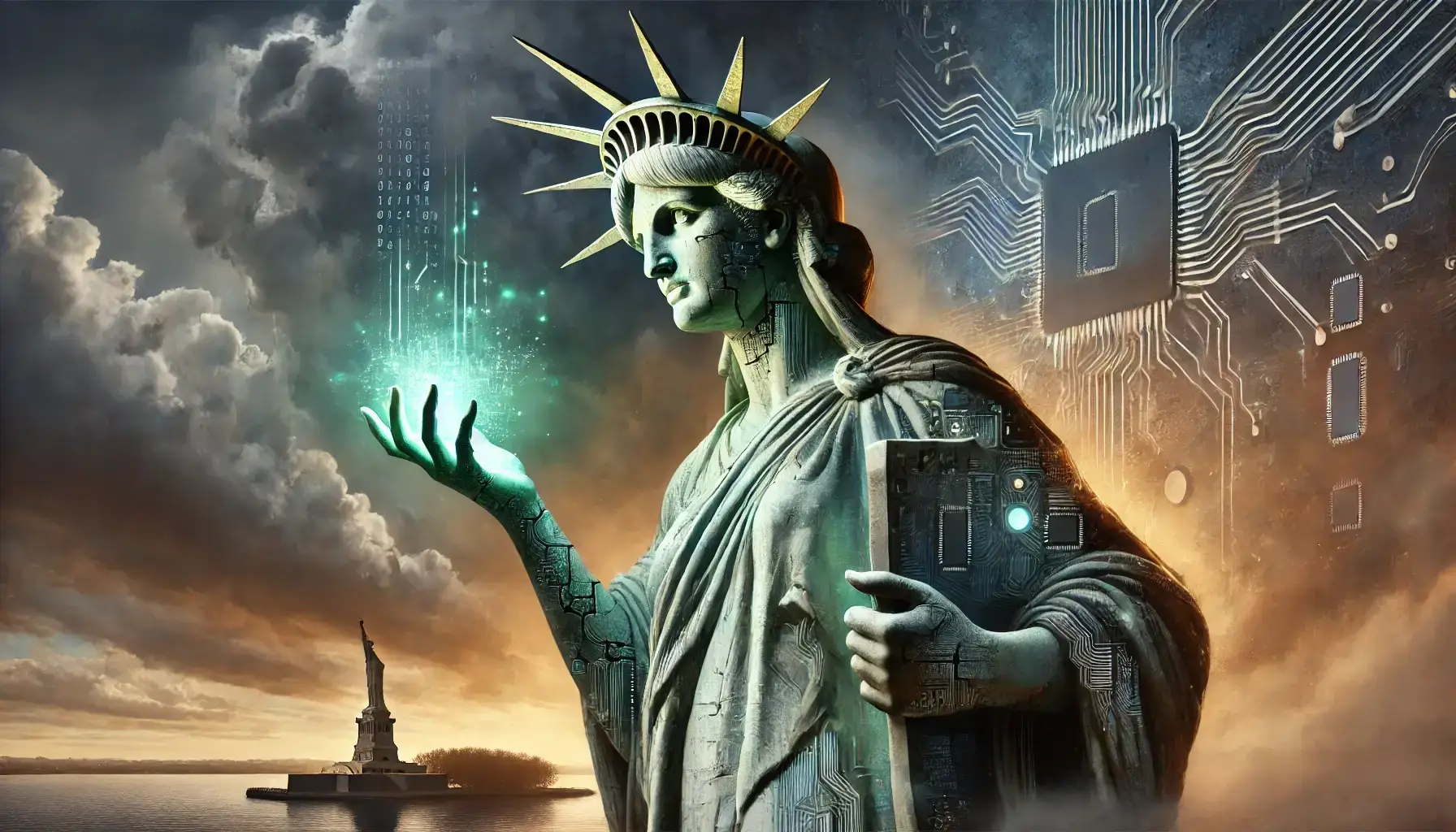The Myth of American Competition

How Vivek Ramaswamy and Elon Musk Undermine Workers
There is a myth of American competition which has taken center stage in the past week. The media frenzy over H-1B visas, with Vivek Ramaswamy and Elon Musk at the center, exposes a critical contradiction in their rhetoric. Both have positioned themselves as champions of “America First” policies, yet their defense of high-skilled immigration through H-1B visas betrays the very American workers they claim to represent. This debate isn’t about welcoming the “best and brightest” to America; it’s about perpetuating a system that prioritizes corporate profits and cheap labor under the guise of innovation while sidelining the development of American talent.
The “High-Skill” Distinction: A Convenient Euphemism
The distinction between “high-skill immigration” and “mass immigration” is a carefully curated narrative designed to deflect criticism and obscure uncomfortable truths. Both Republicans and Democrats, as well as the press, perpetuate this narrative, but none of them address the underlying causes of the so-called immigration crisis. For example, the vast majority of the increase in “illegal immigration” in recent years is a direct result of U.S. military interventions around the world going poorly, creating refugees. This politically incorrect truth is either quietly ignored or completely misunderstood, yet it is central to understanding the broader immigration conversation.
By framing H-1B visa holders as indispensable geniuses, figures like Musk and Ramaswamy perpetuate the myth that American workers are unskilled or incapable of competing globally. This narrative ignores a fundamental truth: many of the jobs these visas support—such as software engineering—are not unattainable skills. If a motivated 14-year-old can code by watching free tutorials on YouTube, why can’t American adults be trained to fill these roles?
This narrative also obscures the reality that corporations use the H-1B program to import cheaper labor. These workers, who often depend on their employer for visa sponsorship, are highly paid indentured servants. Their precarious status means they can’t negotiate for higher wages or better working conditions, leaving them vulnerable to exploitation. Meanwhile, companies like Tesla and SpaceX reap the rewards, collecting government tax credits while underpaying both American and foreign workers.
The Illusion of “We Can’t Compete”
One of the most insidious myths propagated by Musk and Ramaswamy is that America can’t compete globally without importing labor through the H-1B program. But let’s make one thing clear: there has never actually been a competitive proposal to challenge this narrative. The assumption that Americans can’t rise to the occasion isn’t based on evidence; it’s based on convenience.
In reality, the dominant tech companies in the U.S. are not even facing meaningful foreign competition. Google has no true global rival. Apple is unmatched as a consumer electronics brand. Microsoft, Tesla, and others? Nobody in America is aching to buy Chinese electric vehicles or unfamiliar foreign brands of computers. These companies operate in a protected market where their greatest threat isn’t foreign competitors but potential challengers from within the U.S.—American inventors, entrepreneurs, and small businesses that never get the capital or opportunity to compete. Worse still, the oligarchic mentality that prioritizes corporate dominance actively precludes inventors like myself from entering the market.
Even within the auto industry, the failure to challenge Tesla is glaring. When Tesla began positioning electric vehicles (EVs) as the future, nearly every major automaker followed suit, pouring billions into similar EV technology. Not because it was the best strategy, but because Elon Musk claimed it was. Now, Musk himself appears to be backing away from this narrative, diverting Tesla’s focus toward robotics and automation. Where was the alternative vision? Where was the challenge to his dominance? Instead of creating a viable, uniquely American competitor, the industry adopted Musk’s assumptions wholesale, leaving no room for meaningful competition.
Tesla’s Overvaluation and the Missed Opportunity for Real Competition
Tesla’s $1 trillion valuation epitomizes this broken system. Its stock price isn’t tied solely to its cars but to financial gimmicks like options trading and speculative market hype. Musk benefits from a system that prioritizes shareholder value over real-world results. But what if even a fraction of that capital—say $2 trillion—was reallocated to fund direct competitors for all seven of the “Magnificent 7” tech companies, including Tesla? We could see the rise of entirely new entities capable of injecting true innovation into stagnant markets.
For instance, with half the investment Tesla has received, I believe I could build a car company worth $10 billion—one that would be 100 times more efficient, more innovative, and genuinely competitive. This company wouldn’t rely on bloated valuations or speculative bubbles; it would sell cars, distribute profits, and redefine the auto industry.
This distinction matters because hoarding capital and valuation in the stock market contributes to wealth inequality. Poor and middle-class Americans need liquidity to improve their lives, yet millions of retail investors are now holding fractional shares of Tesla, hoping for its stock to double. They believe they are part of something, often parroting Musk’s rhetoric, even when it is antithetical to their own best interests. By redistributing capital into smaller, more focused companies, we could create real economic opportunities and challenge the entrenched giants who dominate our economy.
Who Really Benefits from High-Skill Immigration?
The H-1B visa program’s supposed benefits rarely reach the average American. Advocates argue that importing “high-skill” workers strengthens the economy, but who actually reaps the rewards? Consider a hypothetical: if the world’s best neurosurgeon immigrates to the U.S., they might save hundreds of lives and reduce healthcare costs through groundbreaking procedures. Now compare that to a mid-level software programmer on an H-1B visa. Their contributions primarily benefit their employer’s shareholders—not the public.
For Musk and Ramaswamy, this isn’t about building a better America; it’s about maintaining a system that enriches tech giants at the expense of everyone else. The focus on high-skilled immigration serves as a distraction from their failure to invest in American workers, whose potential remains untapped.
My Alternative Vision for American Labor
The H-1B debate highlights a broader failure to foster competition and invest in domestic talent. Instead of relying on imported labor, we should be building pathways for Americans to enter and thrive in these industries. This means investing in education, apprenticeships, and workforce development programs that empower workers to grow into high-skill roles. It also means breaking the monopoly of the “Magnificent 7” by reallocating resources to new companies that prioritize real innovation over speculative profits.
I’m Still Betting on Americans
The obsession with H-1B visas and imported labor isn’t about necessity—it’s about preserving a rigged system. Musk and Ramaswamy’s rhetoric betrays their allegiance to this system, not to the American people. It’s time to reject the myth of American competition as defined by oligarchs and tech giants. By investing in American workers and fostering real competition, we can build a future that values fairness, ingenuity, and sustainable growth. Let’s stop propping up overvalued giants like Tesla and start betting on the true potential of American innovation.
